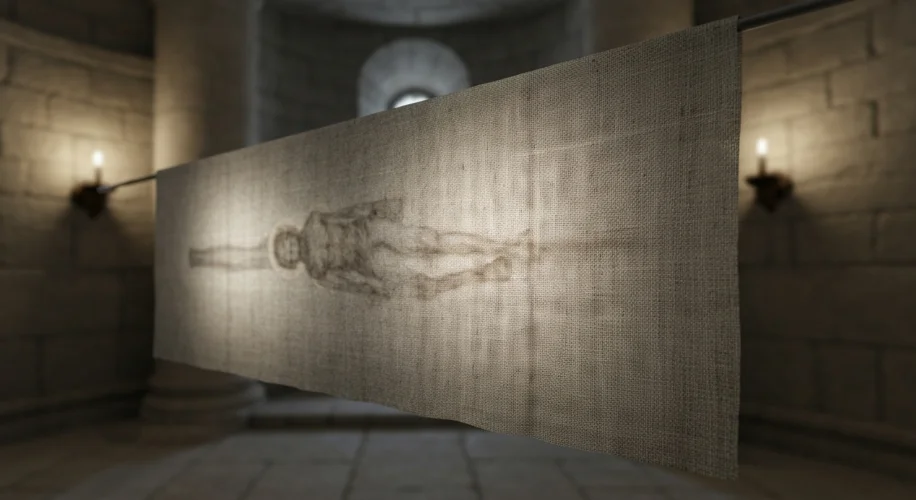Unraveling the Shroud: A New Look at an Ancient Mystery
For centuries, the Shroud of Turin has captivated people with its enigmatic image, believed by many to be the burial cloth of Jesus Christ. The detailed, full-body impression of a crucified man has been the subject of intense scientific scrutiny and passionate debate. Today, I want to share some intriguing new findings from a recent 3D study that challenges our understanding of this iconic artifact.
Did you know that most studies on the Shroud have focused on analyzing the superficial colorations of the linen fibers? This new research, however, took a different approach by creating a high-resolution 3D model of the Shroud. The goal was to understand the nature of the image itself, rather than just the chemical composition of the fibers.
What the scientists found was quite surprising. According to their detailed analysis, the image on the Shroud appears to be a superficial coating that doesn’t seem to have penetrated the linen fibers themselves. Think of it like a very thin layer of paint, but without any discernible pigment particles.
Here’s where it gets really interesting: the study suggests that this observed superficiality and the unique way the image wraps around the body in the 3D model are difficult to explain with known historical or natural processes. The researchers propose that the image might not have originated from a real human body. This doesn’t necessarily mean it’s a miracle or a hoax; rather, it highlights the extreme difficulty in replicating the Shroud’s image using techniques available throughout history, including methods that could mimic a real body’s interaction with a cloth.
This kind of scientific investigation is fascinating because it pushes the boundaries of what we thought we knew about historical artifacts. It forces us to ask new questions and consider possibilities that might not have been on our radar. While the nature of the Shroud of Turin remains a complex puzzle, studies like this offer a fresh perspective, blending cutting-edge technology with the enduring mystery of this ancient relic.
It’s a great reminder that even with something as intensely studied as the Shroud, there’s always more to discover when we approach it with new tools and open minds. What I find most compelling is how science continues to illuminate, even if it means challenging long-held beliefs.

